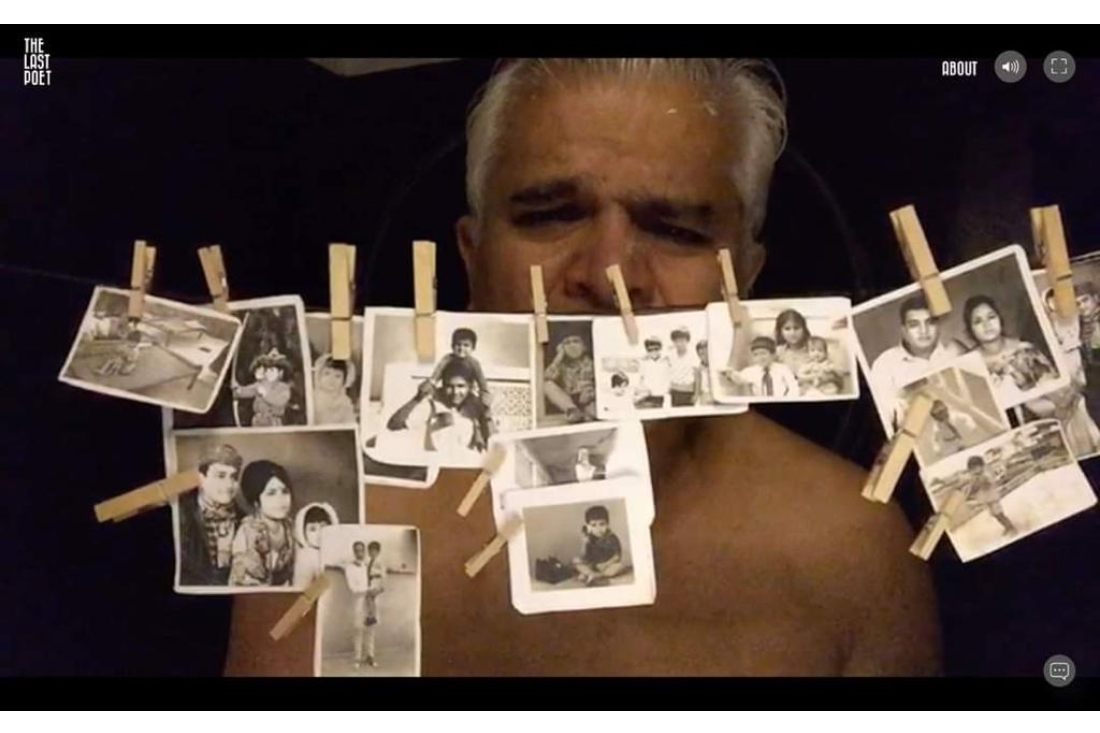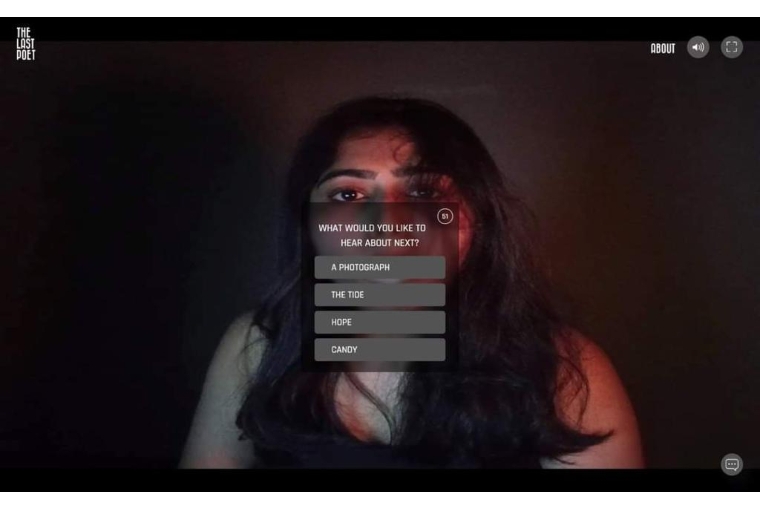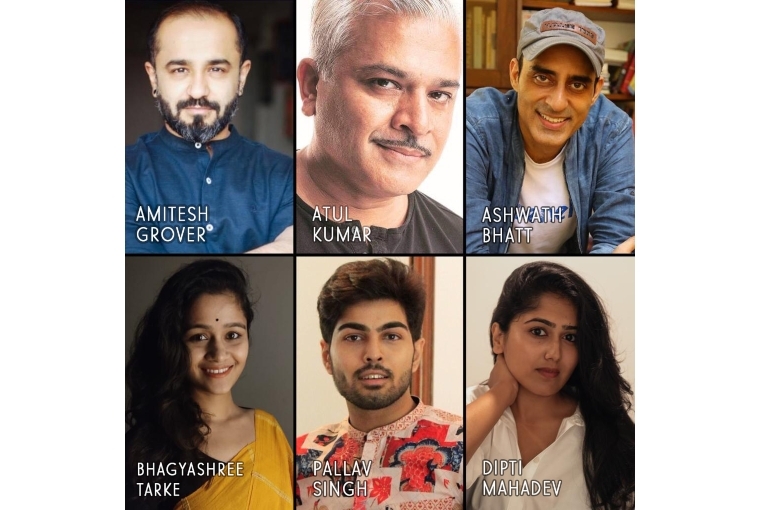

Rarely has our reliance on digital platforms felt as visible and as extreme as it has in 2020. How do we produce experiences and ideas that retain the core of engagement, dialogue and collaboration so intrinsic to our physical initiatives in an isolated, digital landscape of devices? Serendipity Arts Virtual is the co-exploration of these and many other questions raised by curators and artists. One of its resultant curated projects is Amitesh Grover’s The Last Poet.
The Last Poet is a multilayered art form with theatre, film, sound art, creative coding, digital scenography, and live performance. A web-portal opens to rooms, and rooms open to doors, and inside, there is a precise and unambiguous fiction. You may treat this experience as a counterintuitive assurance of life, or you may become unmoored from your life’s comfort with reality. The possible world of this cyber theatre is the only universe in which we can be absolutely certain about something — a cartography of shared memory. In it, there are multilogues, there are multiple possibilities in how you can experience it, and there are infinite freedoms. We are in conversation with Amitesh to know more about him and the project.
Could you tell us a little bit about yourself and your artistic sensibility?
I am a performance based artist and curator. I primarily work with the medium of performance and create theatre, performance art, installations, film and photography. I also write, and for me performance is an expansive field, within which I like to play with ideas of body, of identity, of relationships, of immaterial things that are otherwise difficult to capture. My sensibility is of working in a multi-disciplinary environment. So I work with multiple mediums, and sometimes also juxtapose them together to create work. The idea is to sort of create or give shape to an alternative reality that is possible in the medium of performance.

How was your collaboration with Serendipity Arts Virtual conceived?
Serendipity Arts Foundation, fairly early on in the year realised that organising a physical festival, which is part of their annual calendar in Goa, is going to be impossible. So they generously wrote to artists, including me, to think about how such work is possible in a year in which public assembly is banned and people are not allowed to participate in art festivals. I responded with a body of work I have been developing on the internet, and I wanted to take that further. So we began talks about creating something on the internet, which somehow captured the ‘liveness’ of performance, captured the coming together of artists and audiences, online. The ideas clicked and I started working and assembling a team. This project that I’ve created has taken about six months to be brought to fruition.

Could you give us an insight into your conceptualisation process behind The Last Poet?
The central question I began with was to think about the times that we’re living in, and about how 2020 has been the year of disappearances. How people, because of the virus, have left us suddenly, and how this shock of loss, of grief, has affected so many families around the world. Also how across the world poets and writers have felt that their freedom of writing and creating has been threatened, and some of them have been incarcerated, some of them have had to leave and choose a life of exile, and many live in fear of a perpetual threat. So, I think that was the starting point. I began researching about the stories of poets from the last hundred years, who have suddenly disappeared, who have been imprisoned, who have been attacked for their poems, and it was shocking for me to realise that in the so called democratic modern world of the last century, there is a dark history of artists being attacked and assaulted for the work that they’d made. This became the core idea of The Last Poet. I started to imagine a city which carries a poet’s curse. That this city does not let poets survive, something mysterious happens to them. I imagined this as a visual city so I worked with coders and programmers, and also with a writer, to imagine what this world would look like.
What do you hope the viewers take away from The Last Poet?
I hope what they take away are different memories, narratives, different stories of how people get affected, how a society gets affected and what it loses when a poet is attacked. Now it is of course not a newsworthy incident when a poet gets attacked, but what we do lose in the long run is the sanity of a society. One of the quotes that has been a guiding light for me while creating this project is that ‘a society perishes if it only listens to its politicians and not its poets’ by Jonas Mekas.
Lastly, what are you working on next?
I am working on creating an exhibition on a series of works on the body and on digital data, and of what the future of the body is. It is a series of three different kinds of works, which will open in an exhibition early next year. I am also working on creating a publication of my longer running billboard art called Velocity Pieces, which has been running on a billboard on the Kasturba Gandhi Marg for a year and half.